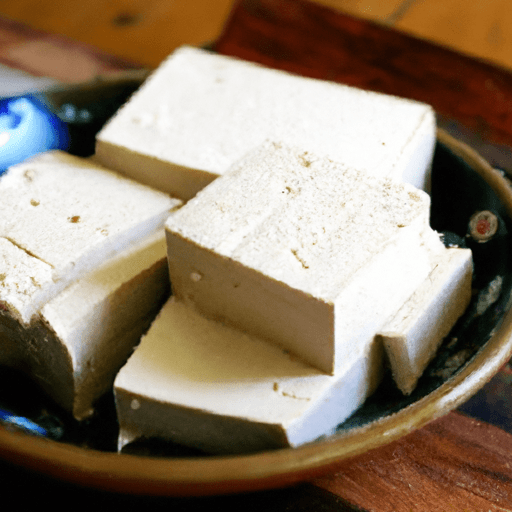The Wonderful World of Bean Curd
Bean curd, also known as tofu, has been a staple ingredient in Asian cuisine for centuries. Derived from soybeans, this versatile and nutritious food item has gained popularity worldwide due to its mild taste and ability to absorb flavors like a sponge. In this blog post, we will explore the many facets of bean curd, from its taste and common uses in cooking to its nutritional value and intriguing history.
A Taste of Heaven
The taste of bean curd is often described as subtle and delicate, allowing it to blend seamlessly with a variety of ingredients and seasonings. Its texture can range from soft and silken to firm and chewy, depending on the type of tofu and how it is prepared. Generally, the taste can be compared to a blank canvas, making it an ideal base for absorbing flavors from spices, sauces, and marinades.
Many Roles, One Ingredient
Bean curd’s versatility shines through in its ability to be used in a wide range of dishes. It can be enjoyed steamed, boiled, stir-fried, deep-fried, grilled, or even raw. In Asian cuisines, you can find it in soups, stews, hot pots, salads, and curries. It can also be pressed to remove excess moisture, resulting in a firmer consistency suitable for grilling or pan-frying.
In addition, bean curd can be transformed into a variety of fabulous creations. Silken tofu, with its velvety texture, is perfect for creamy desserts, smoothies, and dressings. Meanwhile, firm tofu can be crumbled to resemble scrambled eggs or used as a meat substitute in vegetarian dishes. The possibilities are endless!
Nutritional Powerhouse
Not only is bean curd a culinary chameleon, but it also offers numerous health benefits. As a plant-based source of protein, tofu provides all essential amino acids, making it an excellent alternative to animal protein for vegetarians and vegans. Furthermore, it is low in calories and contains no cholesterol, making it a heart-healthy choice.
Tofu is also rich in minerals such as calcium, iron, and manganese. Additionally, it contains phytoestrogens, which are natural plant compounds that have been associated with various health benefits and may help reduce the risk of certain diseases.
A Journey Through Time
The history of bean curd dates back to ancient China, where it is believed to have originated over 2,000 years ago. Legend has it that tofu was accidentally discovered by a Chinese cook who mixed soy milk with a coagulant, resulting in the formation of curds.
Over the centuries, tofu spread throughout East Asia and eventually made its way to the Western world. Today, it can be found in supermarkets, health food stores, and Asian markets worldwide, catering to a diverse audience seeking plant-based alternatives and healthy eating options.
Wrap-Up
Bean curd, the versatile soy-based creation, has carved a special place in the hearts and kitchens of millions. Its mild taste and ability to adapt to various cooking methods and flavors make it a go-to ingredient for both seasoned cooks and beginners alike.
Whether you savor it in a comforting stew or whip it up into a sweet dessert, bean curd offers a nutrient-packed and delicious addition to any meal. So grab a block of tofu, explore its endless possibilities, and embark on a journey of flavors and culinary creativity!
Bean curd is a versatile and widely consumed ingredient that is known by several names, including tofu and soybean curd. Here are some interesting facts about bean curd:
Origin: Bean curd originated in China, where it has been used as a staple food for over 2,000 years. It is believed to have been invented during the Han dynasty.
Production: Bean curd is made by coagulating soy milk and then pressing the resulting curds into soft, firm, or extra firm blocks. The coagulant used in production can be natural, such as nigari (a seawater extract), or chemical, such as calcium sulfate.
Types: There are several types of bean curd, including soft tofu (used for soups and desserts), firm tofu (used for stir-frying and braising), and extra firm tofu (used for grilling, frying, and baking).
Common Uses: Bean curd is a highly versatile ingredient that can be used in a variety of dishes. It can be stir-fried, grilled, steamed, deep-fried, or added to soups, stews, and curries. It readily absorbs flavors from spices, marinades, and sauces, making it suitable for both savory and sweet applications.
Nutritional Benefits: Bean curd is a good source of high-quality plant-based protein, making it a valuable ingredient for vegetarians and vegans. It is also low in calories, carbohydrates, and saturated fat. Additionally, bean curd contains essential amino acids, iron, calcium, and other minerals.
Unique Properties: Bean curd has a neutral flavor on its own, allowing it to take on the taste of other ingredients in a dish. Its texture can vary depending on the type, ranging from soft and custard-like to firm and meaty. The tofu’s texture can be altered by freezing or pressing it.
Historical Significance: Bean curd has played an important role in Asian cuisine for centuries and has spread to various parts of the world. It has been mentioned in written Chinese texts as early as the 2nd century BC. Chinese Buddhist monks popularized the production and consumption of bean curd during the Tang dynasty, as it offered a plant-based protein alternative to meat.
Remember, there are many more interesting facets to the world of bean curd, but these are some key facts that give a good introduction to this versatile ingredient.




Use the share button below if you liked it.
It makes me smile, when I see it.